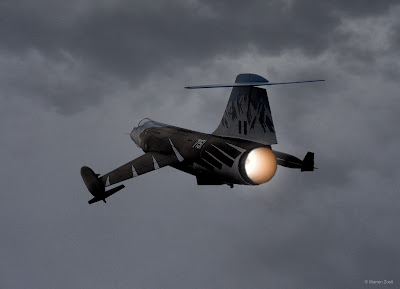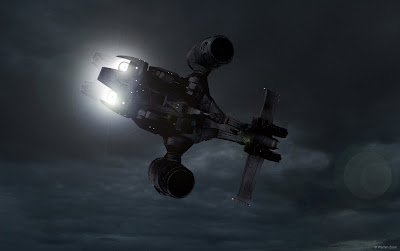








To observe the 70th anniversary of the attack on Pearl Harbor here are some images of models I've built along with real images of 3 of the craft, (the USS Arizona, Mitsubishi type 21 Zero, Curtiss P 40 B) that were involved in the conflict.
From Wikipedia"The attack on Pearl Harbor (called Hawaii Operation or Operation AI by the Japanese Imperial General Headquarters (Operation Z in planning) and the Battle of Pearl Harbor) was a surprise military strike conducted by the Imperial Japanese Navy against the United States naval base at Pearl Harbor, Hawaii, on the morning of December 7, 1941 (December 8 in Japan). The attack was intended as a preventive action in order to keep the U.S. Pacific Fleet from interfering with military actions the Empire of Japan was planning in Southeast Asia against overseas territories of the United Kingdom, the Netherlands, and the United States.
The base was attacked by 353 Japanese fighters, bombers and torpedo planes in two waves, launched from six aircraft carriers. All eight U.S. Navy battleships were damaged, with four being sunk. All but two of the eight were raised, repaired and returned to service later in the war. The Japanese also sank or damaged three cruisers, three destroyers, an anti-aircraft training ship, and one minelayer. One hundred eighty-eight U.S. aircraft were destroyed; 2,402 Americans were killed[12] and 1,282 wounded. The power station, shipyard, maintenance, and fuel and torpedo storage facilities, as well as the submarine piers and headquarters building (also home of the intelligence section) were not attacked. Japanese losses were light: 29 aircraft and five midget submarines lost, and 65 servicemen killed or wounded. One Japanese sailor was captured.
The attack came as a profound shock to the American people and led directly to the American entry into World War II in both the Pacific and European theaters. The following day (December 8) the United States declared war on Japan. Domestic support for isolationism, which had been strong, disappeared. Clandestine support of Britain (for example the Neutrality Patrol) was replaced by active alliance. Subsequent operations by the U.S. prompted Germany and Italy to declare war on the U.S. on December 11, which was reciprocated by the U.S. the same day.
There were numerous historical precedents for unannounced military action by Japan. However, the lack of any formal warning, particularly while negotiations were still apparently ongoing, led President Franklin D. Roosevelt to proclaim December 7, 1941, "a date which will live in infamy".
The attack on Pearl Harbor was intended to neutralize the U.S. Pacific Fleet, and hence protect Japan's advance into Malaya and the Dutch East Indies, where she sought access to natural resources such as oil and rubber. War between Japan and the United States had been a possibility each nation had been aware of (and developed contingency plans for) since the 1920s, though tensions did not begin to grow seriously until Japan's 1931 invasion of Manchuria. Over the next decade, Japan continued to expand into China, leading to all-out war in 1937. Japan spent considerable effort trying to isolate China and achieve sufficient resource independence to attain victory on the mainland; the "Southern Operation" was designed to assist these efforts.
From December 1937 events such as the Japanese attack on the USS Panay and the Nanking Massacre (more than 200,000 killed in indiscriminate massacres) swung public opinion in the West sharply against Japan and increased their fear of Japanese expansion, which prompted the United States, the United Kingdom, and France to provide loan assistance for war supply contracts to the Republic of China.
In 1940, Japan invaded French Indochina in an effort to control supplies reaching China. The United States halted shipments of airplanes, parts, machine tools, and aviation gasoline, which was perceived by Japan as an unfriendly act. The U.S. did not stop oil exports to Japan at that time in part because prevailing sentiment in Washington was that such an action would be an extreme step, given Japanese dependence on U.S. oil, and likely to be considered a provocation by Japan.
Early in 1941, President Franklin D. Roosevelt moved the Pacific Fleet to Hawaii from its previous base in San Diego and ordered a military buildup in the Philippines in the hope of discouraging Japanese aggression in the Far East. Because the Japanese high command was (mistakenly) certain any attack on the British Southeast Asian colonies would bring the U.S. into the war, a devastating preventive strike appeared to be the only way to avoid U.S. naval interference. An invasion of the Philippines was also considered to be necessary by Japanese war planners. The U.S. War Plan Orange had envisioned defending the Philippines with a 40,000 man elite force. This was opposed by Douglas MacArthur, who felt that he would need a force ten times that size, and was never implemented By 1941, U.S. planners anticipated abandonment of the Philippines at the outbreak of war and orders to that effect were given in late 1941 to Admiral Thomas Hart, commander of the Asiatic Fleet.[20]
The U.S. ceased oil exports to Japan in July 1941, following Japanese expansion into French Indochina after the fall of France, in part because of new American restrictions on domestic oil consumption. This in turn caused the Japanese to proceed with plans to take the Dutch East Indies, an oil-rich territory. The Japanese were faced with the option of either withdrawing from China and losing face or seizing and securing new sources of raw materials in the resource-rich, European-controlled colonies of South East Asia.
Preliminary planning for an attack on Pearl Harbor to protect the move into the "Southern Resource Area" (the Japanese term for the Dutch East Indies and Southeast Asia generally) had begun very early in 1941 under the auspices of Admiral Isoroku Yamamoto, then commanding Japan's Combined Fleet. He won assent to formal planning and training for an attack from the Imperial Japanese Navy General Staff only after much contention with Naval Headquarters, including a threat to resign his command. Full-scale planning was underway by early spring 1941, primarily by Captain Minoru Genda. Japanese planning staff studied the 1940 British air attack on the Italian fleet at Taranto intensively. It was of great use to them when planning their attack on U.S. naval forces in Pearl Harbor.
Over the next several months, pilots trained, equipment was adapted, and intelligence collected. Despite these preparations, the attack plan was not approved by Emperor Hirohito until November 5, after the third of four Imperial Conferences called to consider the matter. Final authorization was not given by the emperor until December 1, after a majority of Japanese leaders advised him the "Hull Note" would "destroy the fruits of the China incident, endanger Manchukuo and undermine Japanese control of Korea."
By late 1941, many observers believed that hostilities between the U.S. and Japan were imminent. A Gallup poll just before the attack on Pearl Harbor found that 52% of Americans expected war with Japan "some time in the near future", while 27% did not. While U.S. Pacific bases and facilities had been placed on alert on multiple occasions, U.S. officials doubted Pearl Harbor would be the first target. They expected the Philippines to be attacked first. This presumption was due to the threat that the air bases throughout the country and the naval base at Manila posed to sea lanes, as well as the shipment of supplies to Japan from territory to the south. They also incorrectly believed that Japan was not capable of mounting more than one major naval operation at a time.
The attack had several major aims. First, it intended to destroy important American fleet units, thereby preventing the Pacific Fleet from interfering with Japanese conquest of the Dutch East Indies and Malaya. Second, it was hoped to buy time for Japan to consolidate its position and increase its naval strength before shipbuilding authorized by the 1940 Vinson-Walsh Act erased any chance of victory. Finally, it was meant to deliver a severe blow to American morale, one which would discourage Americans from committing to a war extending into the western Pacific Ocean and Dutch East Indies. To maximize the effect on morale, battleships were chosen as the main targets, since they were the prestige ships of any navy at the time. The overall intention was to enable Japan to conquer Southeast Asia without interference.
Striking the Pacific Fleet at anchor in Pearl Harbor carried two distinct disadvantages: the targeted ships would be in very shallow water, so it would be relatively easy to salvage and possibly repair them; and most of the crews would survive the attack, since many would be on shore leave or would be rescued from the harbor. A further important disadvantage—this of timing, and known to the Japanese—was the absence from Pearl Harbor of all three of the U.S. Pacific Fleet's aircraft carriers (Enterprise, Lexington, and Saratoga). Ironically, the IJN top command was so imbued with Admiral Mahan's "decisive battle" doctrine—especially that of destroying the maximum number of battleships—that, despite these concerns, Yamamoto decided to press ahead.
Japanese confidence in their ability to achieve a short, victorious war also meant other targets in the harbor, especially the navy yard, oil tank farms, and submarine base, could safely be ignored, since—by their thinking—the war would be over before the influence of these facilities would be felt.
To read more please click on the Wikipedia link above.























